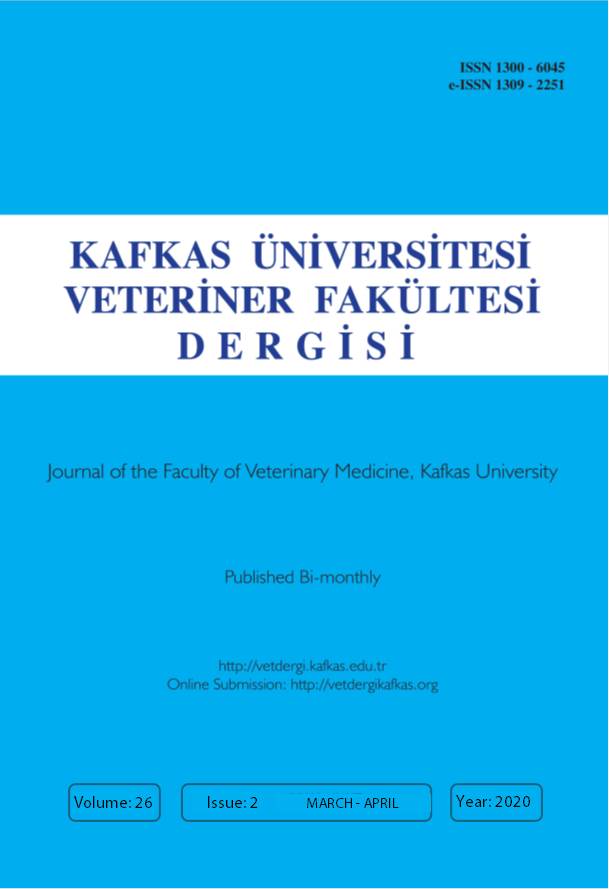
This journal is licensed under a Creative Commons Attribution-NonCommercial 4.0 International License
Kafkas Üniversitesi Veteriner Fakültesi Dergisi
2020 , Vol 26 , Issue 2
Genetic Characterization of Gigantocotyle explanatum from Buffaloes in Northwestern Pakistan
1Department of Animal Sciences, Faculty of Biological Sciences, Quaid-i-Azam University Islamabad, 45320, PAKISTAN
DOI :
10.9775/kvfd.2019.22777
The family Paramphistomidae including Gigantocotyle explanatum regularly infects ruminants and causes immense economic losses to the
livestock industry by decreasing dairy products and growth rates. The present study was aimed to determine the novel molecular data
of G. explanatum in Pakistan using ribosomal DNA (ITS1-5.8S, ITS2) regions. Adult flukes, G. explanatum, were collected from bile ducts of
infected buffaloes. The most relevant sequences from the other parts of the world were downloaded from the GenBank. High intraspecific
variations were obtained at 5 end region of ITS1 gene. The 3 end of ITS1 was conserved and showed 96% similarity with Paramphistomum
cervi (KJ459936). The nucleotide blast search of 5.8S gene revealed that 40 sequences from trematodes had 98% to 99% identity with
present sequence and found genetically identical to P. cervi (KJ459938) and Dicrocoelium chinensis (KF734784) from China. The ITS2 gene
of investigated isolates showed no variation with Myanmar (AB743577), while blast search revealed 96-100% similarity with isolates from
Myanmar, India, Bangladesh and China. This study demonstrates the utility of ITS2 and 3´ end ITS1 sequences as a valuable tool for elucidating
species phylogenetic relationship in south Asia. This sequencing data will facilitate more accurate identification of G. explanatum, enabling
future work to resolve many ambiguities in the literature regarding this species.
Keywords :
Gigantocotyle explanatum; Water buffaloes, Pakistan, Genetic characterization










